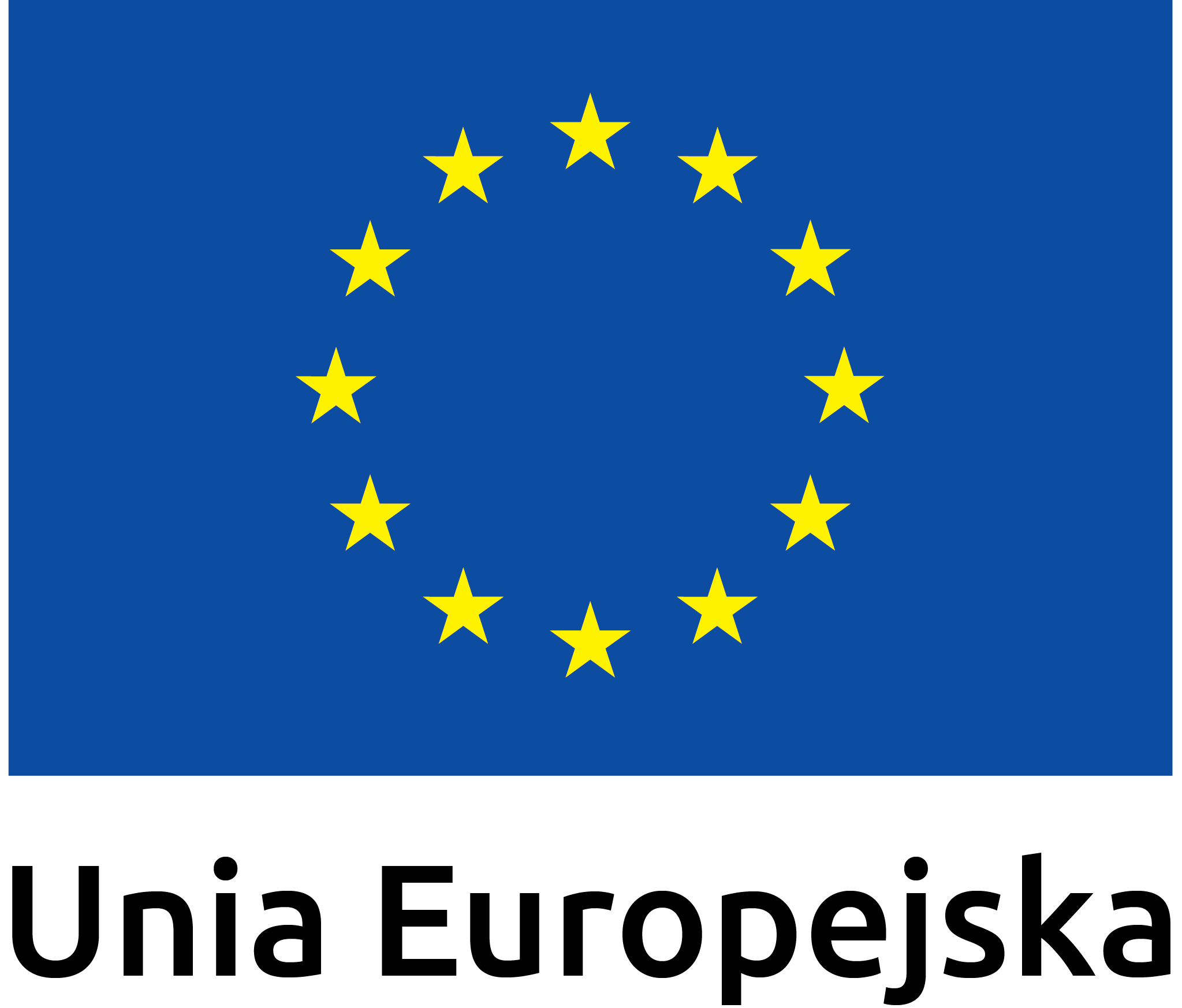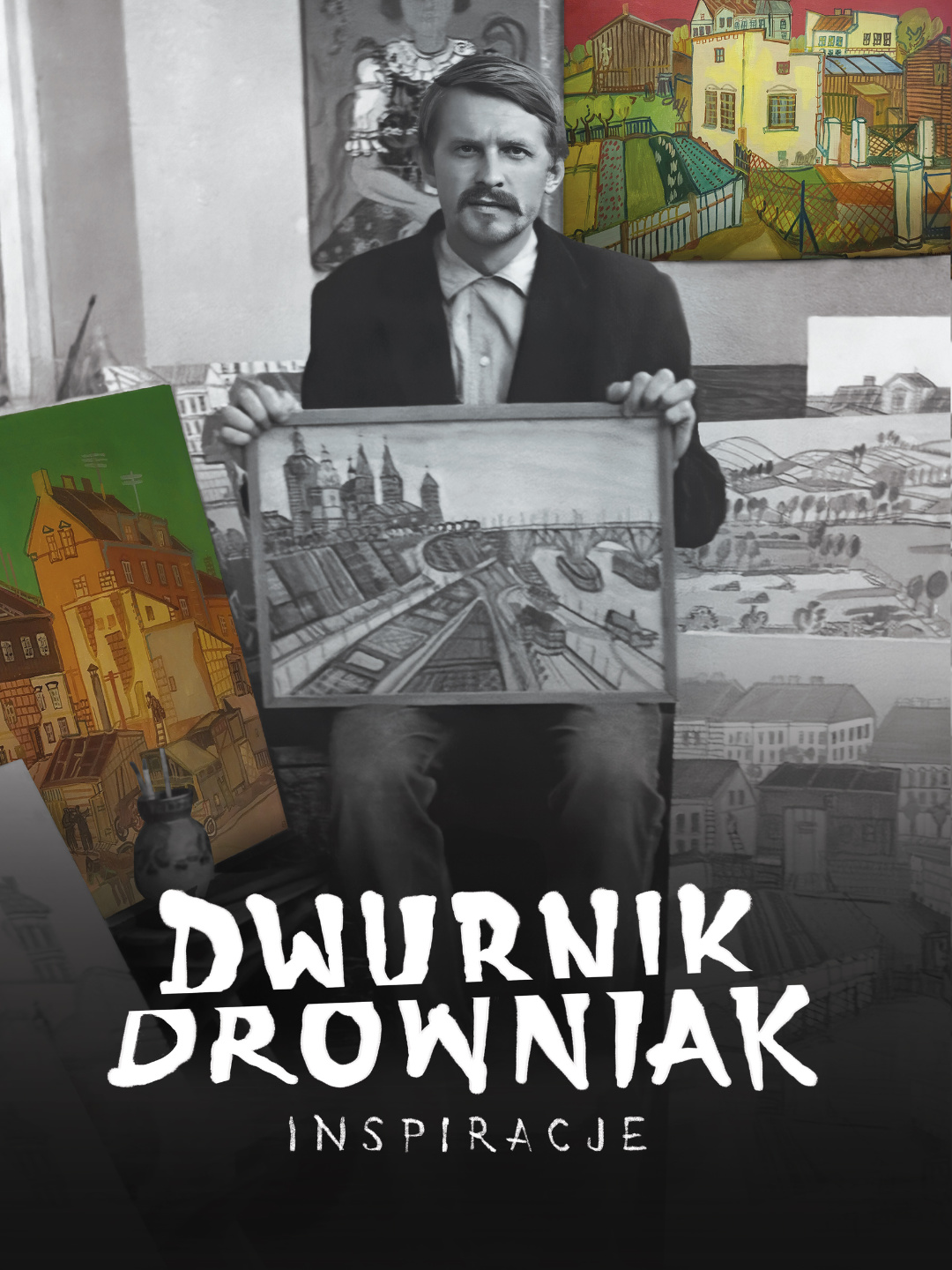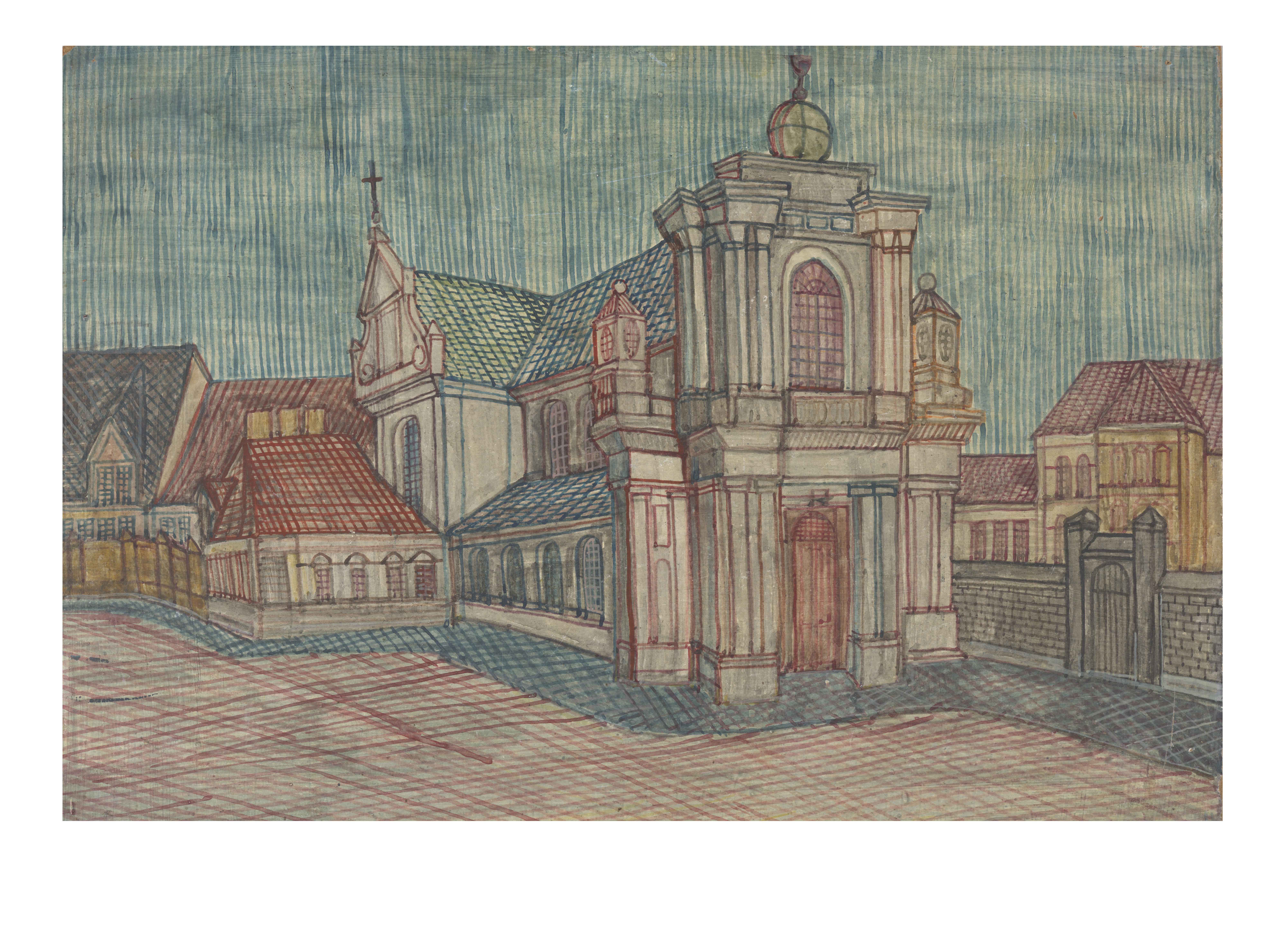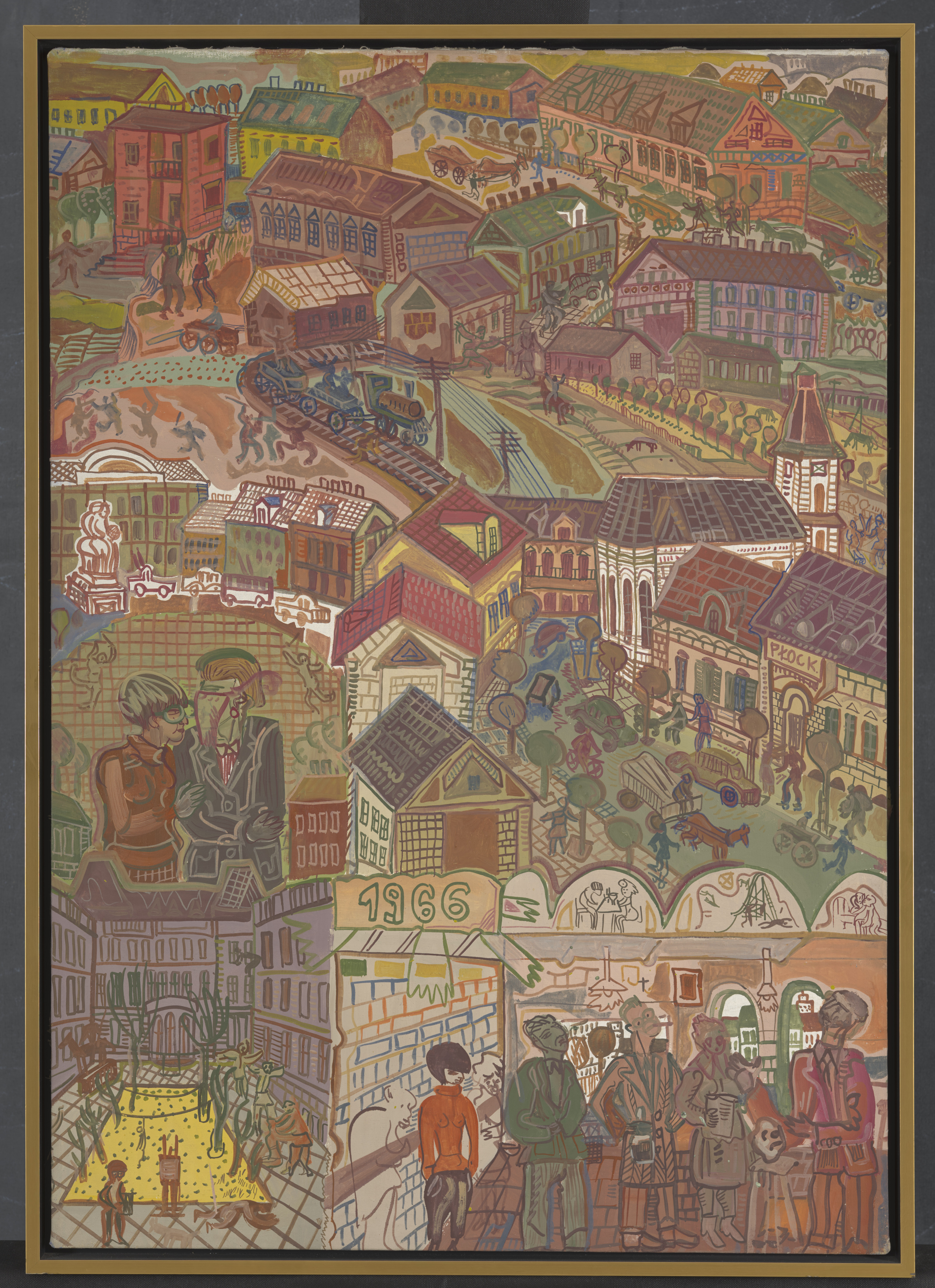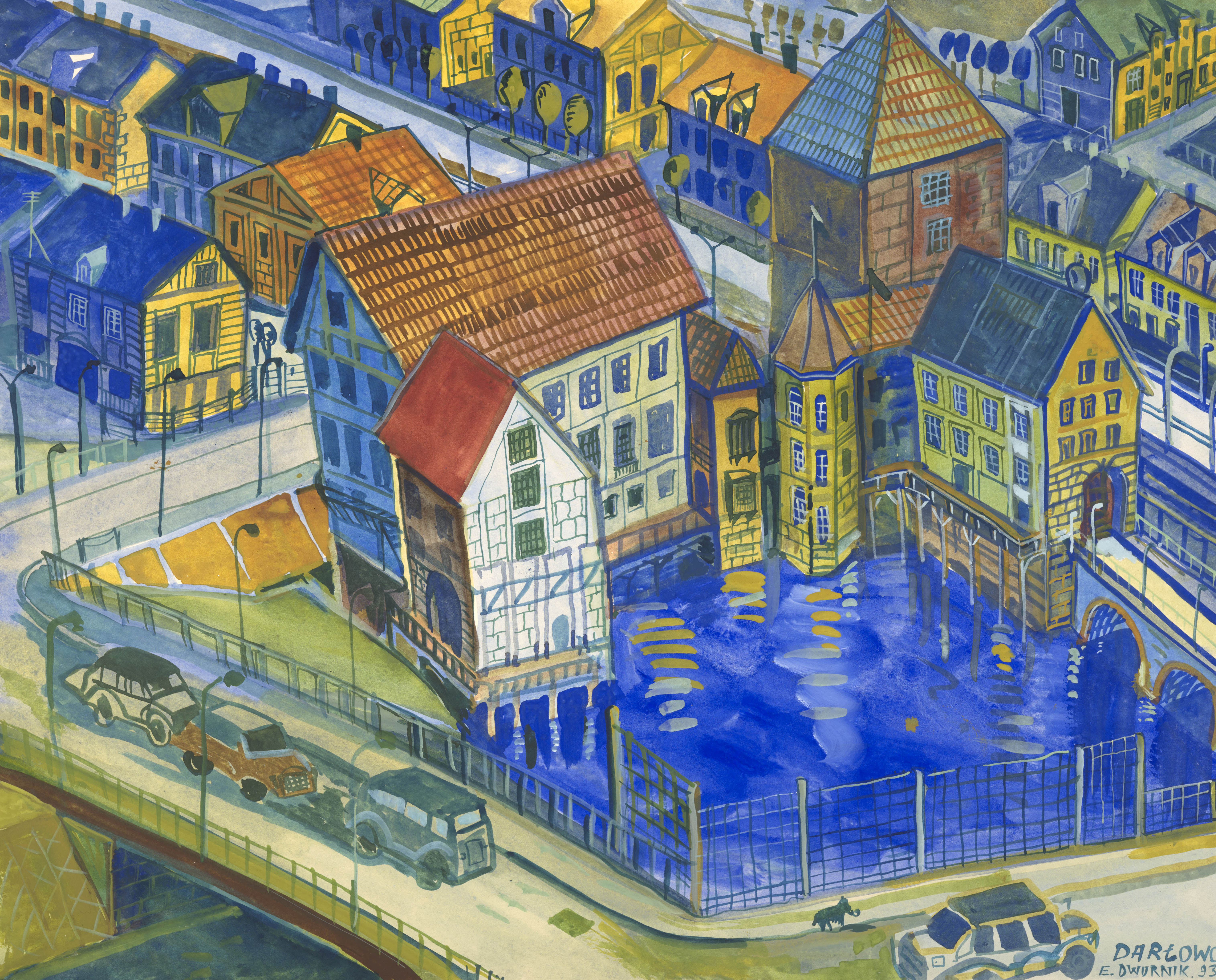Exhibition
Exhibition "Dwurnik-Nikifor. Inspirations"
We invite you to an exhibition that is an artistic dialogue between two personalities - the naive painter Nikifor and Edward Dwurnik, a professional artist who was once inspired by Nikifor and whose painting accompanied him throughout his life, but did not prevent him from developing his own originality.
Edward Dwurnik (1943–2018) – one of the most respected and recognizable Polish painters, an outstanding draughtsman and graphic artist. He graduated from the Academy of Fine Arts in Warsaw, where he studied painting in the studio of Eugeniusz Eibisch and sculpture with Jerzy Jarnuszkiewicz from 1963 to 1970. After his second year of studies, in the summer of 1965, he saw an exhibition of Nikifor's works in Kielce, captivated by their fanciful realism and grotesque compositions. Years later, he confessed: "He [Nikifor] was my most important master, in fact, my only one. I have never experienced greater emotions than those aroused by seeing his paintings in person." Two years later, Dwurnik met Drowniak in person when he was brought to Warsaw: "They sat him down on a bench, and he paid no attention to anyone; he just drew, waving his pencil constantly in such an incredible rhythm." Then they took him to the Bristol and Europejski hotels, the New Town Square, the 10th Anniversary Stadium, and elsewhere. I followed them, and a few days later I retraced the same route, drawing the same objects.
Edward Dwurnik found a master who inspired him, but not deprived him of his originality. He created works that he arranged into diverse series. Hitchhiking Journeys (from 1966) are bird's-eye views filled with human tissue, Sportsmen (1972–1978) is a grotesque portrait of Poles in the communist era, Workers (1975–1991) documents the struggle against communist rule, Road to the East (1989–1991) commemorates Stalinist exiles, and From December to June (1990–1994) commemorates the victims of martial law in Poland. He painted abstractions, was unafraid to grapple with historical themes, deconstructed Matejko's iconic paintings (The Battle of Grunwald; The Prussian Homage), and engaged in polemics with other classics of art.
His portfolio includes over 8,000 easel paintings and 20,000 works on paper, for which he has received numerous awards, including the Cyprian Kamil Norwid Art Criticism Award (1981), the Solidarity Committee for Independent Culture (1983), and the Coutts Contemporary Art Foundation in Zurich (1992). He has participated in prestigious exhibitions of modern art: documenta 7 in Kassel (1982), the Nouvelle Biennale de Paris at the Grande Halle de la Vilette in Paris (1985), and Der Riss im Raum at the Martin-Gropius-Bau in Berlin (1994/5).
Edward Dwurnik found a master who inspired him, but not deprived him of his originality. He created works that he arranged into diverse series. Hitchhiking Journeys (from 1966) are bird's-eye views filled with human tissue, Sportsmen (1972–1978) is a grotesque portrait of Poles in the communist era, Workers (1975–1991) documents the struggle against communist rule, Road to the East (1989–1991) commemorates Stalinist exiles, and From December to June (1990–1994) commemorates the victims of martial law in Poland. He painted abstractions, was unafraid to grapple with historical themes, deconstructed Matejko's iconic paintings (The Battle of Grunwald; The Prussian Homage), and engaged in polemics with other classics of art.
His portfolio includes over 8,000 easel paintings and 20,000 works on paper, for which he has received numerous awards, including the Cyprian Kamil Norwid Art Criticism Award (1981), the Solidarity Committee for Independent Culture (1983), and the Coutts Contemporary Art Foundation in Zurich (1992). He has participated in prestigious exhibitions of modern art: documenta 7 in Kassel (1982), the Nouvelle Biennale de Paris at the Grande Halle de la Vilette in Paris (1985), and Der Riss im Raum at the Martin-Gropius-Bau in Berlin (1994/5).
We have prepared this exhibition at the Nikifor Museum to mark the 130th anniversary of Epifaniusz Drowniak's birth, which also marks the 60th anniversary of the discovery of the Krynica master before Dwurnik. We have included a unique parallel between the painters in the exhibition title, juxtaposing the similar-sounding surname of the younger artist with the Lemko Drowniak. The exhibition will feature 40 works by Dwurnik, from Drawing No. 1, created after leaving an exhibition of Nikifor's works on June 13, 1965 (from which the artist dated his work), to distinctive, vibrant vedutas from his final years.
We focus primarily on his early works, showcasing the process of transforming Nikifor's world through Dwurnik's work. Drowniak's streets, train stations, and hilly landscapes are typically characterless, intuitively symmetrical, gradations filled with muted colors, and melancholic. Meanwhile, Dwurnik's cities are vibrant, simultaneously reportage and caricature, bursting with a riot of color, dominated by ultramarine, yellow, and red. They are united by a cartoonish approach, elements of nature reduced to symbols, and the juxtaposition of buildings seemingly distant in reality, embellished for compositional purposes and emotional impact. Works from the Edward Dwurnik Foundation and private collections will be interwoven with Nikifor's works in the museum space, creating a unique dialogue between the two masters. Quotes from: Mirosław Ratajczak, "About Nikifor (Mirosław Ratajczak in conversation with Edward Dwurnik), Odra 1996, no. 4.
Author: Sławomir Majoch, exhibition curator
We focus primarily on his early works, showcasing the process of transforming Nikifor's world through Dwurnik's work. Drowniak's streets, train stations, and hilly landscapes are typically characterless, intuitively symmetrical, gradations filled with muted colors, and melancholic. Meanwhile, Dwurnik's cities are vibrant, simultaneously reportage and caricature, bursting with a riot of color, dominated by ultramarine, yellow, and red. They are united by a cartoonish approach, elements of nature reduced to symbols, and the juxtaposition of buildings seemingly distant in reality, embellished for compositional purposes and emotional impact. Works from the Edward Dwurnik Foundation and private collections will be interwoven with Nikifor's works in the museum space, creating a unique dialogue between the two masters. Quotes from: Mirosław Ratajczak, "About Nikifor (Mirosław Ratajczak in conversation with Edward Dwurnik), Odra 1996, no. 4.
Author: Sławomir Majoch, exhibition curator
